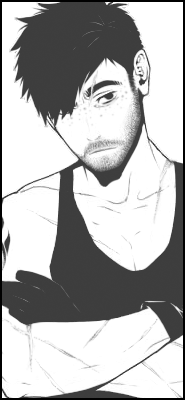1 ignor plis Sun May 06, 2018 11:14 am
ignor plis Sun May 06, 2018 11:14 am
Takao

S-rank


Welcome to the Fire Country!
I. A Brief Introduction
Hi no Kuni, also known as the “the Land of Fire” or more simply as the "Fire Country", is one of the five great countries in the Sagaverse. The Land of Fire is governed largely by a Daimyō, while smaller towns and villages may be internally governed by independently elected officials. The Land of Fire hosts one of the great shinobi villages of the world, Konohagakure no Sato, also known as the “Hidden Leaf Village”. The residents of the Land of Fire are appropriately oriented toward the element of fire, typically experiencing warm climates and bright weather. The Land of Fire experiences long springs and summers, and moderate autumns and winters. The Land of Fire is known for massive, lush forests and expansive, clear rivers that is home to a broad spectrum of fauna and flora. The Land of Fire also hosts large stretches of tall mountains, vast fields and grassland, as well as a plethora of farmland throughout the territory. The people of the Land of Fire are generally known to be warm, welcoming, and friendly, and tend to act in a communal fashion for the betterment of their societies. This communal mindset is partly due to their life philosophy, “the Will of Fire”, that has been present in Konohagakure since its founding. The Land of Fire is broken up into four main provinces: The Shina Province, where Konohagakure is located, is the most populated and claims the northeastern portion of the Land of Fire. The Akemi Province is the second most populous and claims the northwestern portion, followed closely by the Taika Province and the Kogeta province, who claim the southwestern and southeastern portions of Hi no Kuni respectively. |
II. Geography and Climate
The land area of the entirety of Hi no Kuni is approximately 1,427,205 km². In terms of contiguous land area, the Land of Fire is third in size behind the Land of Earth and the Land of Wind. The Land of Fire shares a western border with the Lands of Rivers, Rain, and Grass. It shares a northern border with the Lands of Waterfalls, Iron, Sound, Hot Water, and is connected to the Land of Waves by the Great Naruto Bridge. To the south, the Land of Fire shares a border with the Land of Noodles and the Land of Tea. The Land of Fire consists of three main biomes; temperate broadleaf forest, subtropical rainforest, and temperate steppe. Central Land of Fire and Eastern Land of Fire are covered in temperate broadleaf forest. Southern Land of Fire subtropical rainforest. Northwestern Land of Fire begins to develop into a temperate steppe biome the closer to the border toward the Land of Grass. Portions of the Land of Fire are large stretches of grassland as well, although forests dominate over 85% of the land area. Additionally, the Land of Fire is home to over 20,000km of rivers, and hosts three large freshwater lakes and over four dozen smaller freshwater lakes. The majority of the Land of Fire’s climate is warm-summer humid continental, with some coastal portions receiving a more warm to hot-summer mediterranean climate. The southern peninsula of the Land of Fire experiences a mixture of warm-summer humid continental and humid subtropical climates. Most of the taller mountains have an alpine climate, while some of the flatter steppes to the northwest merely experience a cold semi-arid climate. The Shina, Akemi, and Taika provinces all experience mild snowfall in the winter, while the peninsula south of Hi no Kuni’s neck experiences little to no snowfall. |
III. Important Links
|
Last edited by Takao on Sun May 06, 2018 9:35 pm; edited 8 times in total

 Home
Home






































































 Hokage:
Hokage:  Kazekage:
Kazekage:  Raikage:
Raikage:  Tsuchikage:
Tsuchikage:  Mizukage:
Mizukage: 